Finding new hobbies and ways to spend your time can be fun. However, do you want to get into sewing but always struggle to unthread the machine? What is the correct way to unthread a sewing machine? Well, we've done extensive research and have the answers below. Let's discuss!
Unthreading a sewing machine shouldn't be too difficult. To begin:
- Grab a pair of scissors and cut the string from the reel of your appliance.
- Lift your presser foot and grab the remaining thread.
- Pull the thread the same way you would use it, sew, and you're done!
It's also worth noting that if you are too rough during the unthreading process, your machine is more likely to break or have issues with its tension discs.
As we begin, we will cover everything about sewing machines and discuss how to untread one properly. Whether you're a beginner, expert, or somewhere in the middle, we're here to help. With that said, let's dive right into this topic!
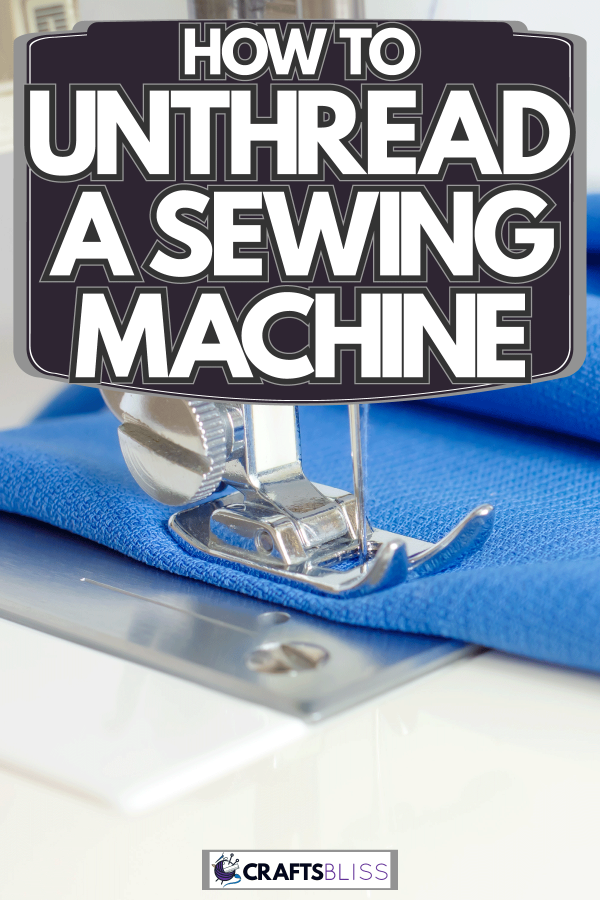
How Do You Unthread A Sewing Machine?
For anyone having trouble removing the thread from their sewing machine, you're not alone. Generally, doing this will take some practice, but eventually should be easy.
As we covered above, you want to start by grabbing a pair of sharp scissors. Next, you want to cut the string from the reel at the top of your machine.
From there, you can lift the presser foot and grab the thread. Finally, gently pull the remaining thread out of your sewing machine.
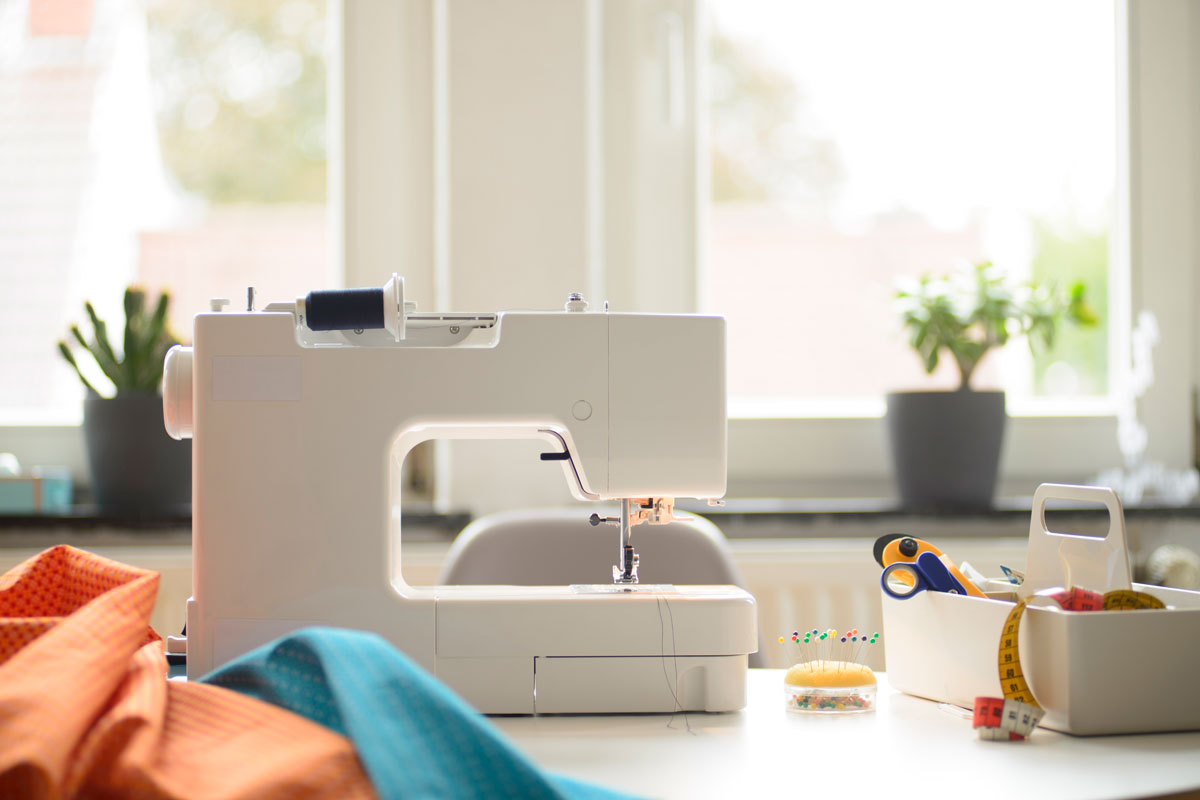
Remember, it's a good idea to pull this thread out the same way it would be if you were sewing, so don't yank it in the wrong direction.
Furthermore, it's essential to be careful during this process. If you're too rough with your machine, it could become damaged and need an expensive repair or replacement.
Moreover, every sewing machine is slightly different, so we recommend checking out the user manual if you're encountering unthreading problems.
Unthreading A Sewing Machine Tutorial
Here is a helpful video tutorial explaining how to remove the thread from your sewing machine correctly. In this video, she describes how to quickly unthread a standard machine without damaging it and gives other helpful insights.
Why Does My Sewing Machine Keep Coming Unthreaded?
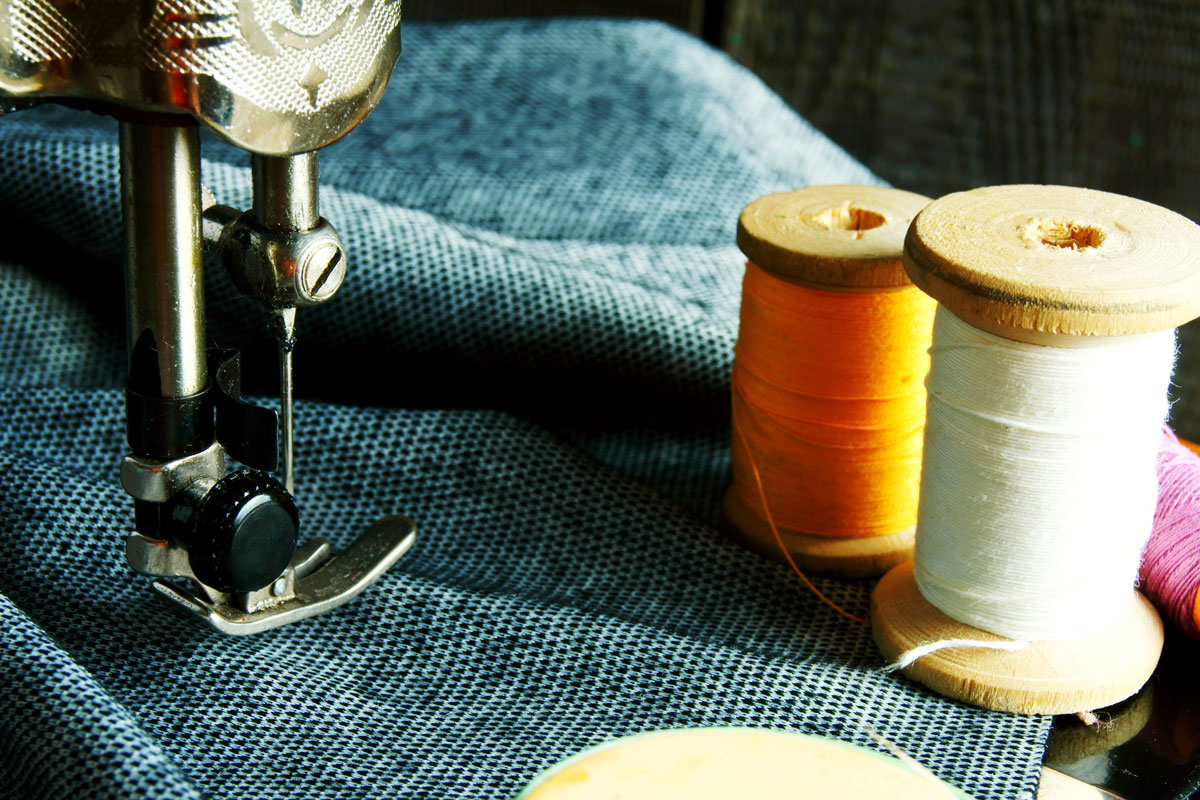
If you notice the thread inside your sewing machine won't stay in place, this could be due to the spool. In general, if you don't install a spool correctly, it can cause the thread to come out of place.
According to Brother Canada, you also want to ensure you're using a thread cap that fits your spool. If you forget to do this, expect your sewing time to be stopped by a thread coming undone every few stitches.
The website also gives a few other causes for unthreading, which include:
- Knotted or tangled thread.
- The upper thread tension is too tight.
- The thread inside your bobbin case is tangled.
- Your machine's needle is damaged.
- Your needle isn't correctly installed.
- The bobbin you're using is wrong.
- Your sewing machine is defective.
Of course, many of these issues are somewhat easy to fix, so you don't have to worry. With that said, if you try rethreading and follow these steps to no avail, you may need to contact your machine's manufacturer.
Like any appliance, sewing machines aren't fool-proof and could have damage from when they were made. Luckily, many brands offer warranty support for a limited period, so it's worth reaching out directly to them with any questions or concerns.
What Do I Do If My Sewing Machine Thread Is Stuck?
For anyone with a stuck thread in their machine, removing it will take some precision. First, you want to remove the bobbin from your sewing appliance.
Next, make sure that the bobbin is loaded properly. If not, you will see the tangled thread. Most sewing machines have a top-loading bobbin. If yours doesn't, follow the manufacturer's steps while removing it.
The case should be clear, so this will be easy to see. Next, you want to remove any caught threads from your sewing machine.
Make sure the bobbin is tight and there aren't loose threads surrounding it. We recommend rewinding your bobbin to ensure it is tight and ready for action.
Additionally, some sewing appliances have a diagram showing how to do this correctly, so keep an eye out for that on yours.
Fixing A Jammed Sewing Machine Tutorial
Here we have a helpful tutorial on the basics of using a sewing machine and threading it correctly. In this video, they dive into fixing a machine with a caught/jammed thread and give other useful tips.
Are All Sewing Machines The Same?
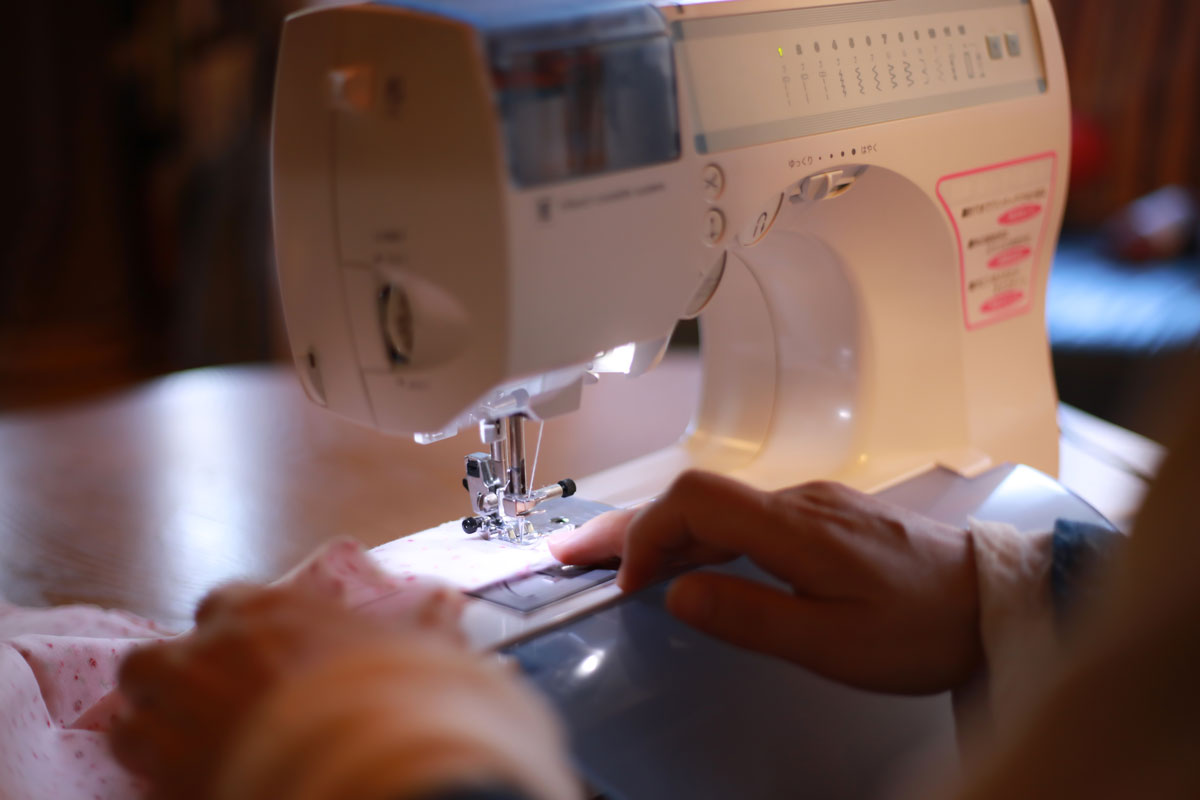
No. Although it may feel like all sewing machines work and are the same, this is untrue. Depending on what brand your sewing device is, there could be features some others may not have or vice versa.
According to Treasurie, there are seven main types of sewing machines. These include:
- Mechanical Treadle Sewing Machines
- Electronic Mechanical Sewing Machines
- Mini and Portable Machines
- Computerized or Automated Machines
- Embroidery Machines
- Quilting Machines
- Overlocking or Serger Machines
Furthermore, there are two broader categories of sewing appliances: industrial and those made for home-usage. The larger, more industrial machines will have more features than a portable home design, so these will operate differently.
The pricing of your sewing machine will also determine how many bells and whistles it has. Like anything, the more you spend on a sewing appliance, the more fun things it will generally be able to do.
With that said, not everyone needs to spend thousands on a sewing system. For example, one person using their machine for hobbies, like crafts, won't depend on their machine like a business owner or designer will.
Therefore, that hobbyist doesn't need to necessarily spend so much to get started. Sometimes, a higher price tag doesn't mean grade-A quality, so read reviews before buying.
What Kind Of Sewing Machine Should I Buy?
For those wanting to dive into the world of sewing, you'll need to choose a machine. Although there are endless appliances on the market, some are made better than others.
According to the New York Times, a few stand-out sewing machines include:
- Janome MOD-19 (best for beginners)
- Singer Heavy Duty 4423 (reliable stitching)
- Janome HD1000 (great for thicker fabrics)
Another brand that tends to rank well for its quality is Brother. As we mentioned above, this brand gives helpful insight through their website for troubleshooting, which is why we figured to include them.
In addition, not every great sewing machine needs to break the bank. Starting small is more than okay if you're new to this hobby/career.
For example, if you want to buy your child a sewing machine to get started, they don't need one with every feature available. We recommend finding a durable, user-friendly option with great reviews instead.
Janome MOD-19 Easy-To-Use Sewing Machine
This sewing machine has 19 stitches, promises easy threading, has a top-loading bobbin, a five-piece "feed dog" system, is electric, and offers a 25-year warranty.
Check out this sewing machine on Amazon.
SINGER 4423 Heavy Duty Sewing Machine
This sewing machine has 23 built-in stitches, is heavy-duty, has an automatic needle threader, is high-speed (1,100 stitches per minute), and comes with a 25-year limited warranty.
See this sewing machine on Amazon.
Janome HD1000 Heavy-Duty Sewing Machine
This sewing machine has a heavy-duty design, 14 built-in stitches, a free arm for sewing pants, an automatic needle threader, and comes in various colors.
View this sewing machine on Amazon.
How Much Does A Typical Sewing Machine Cost?
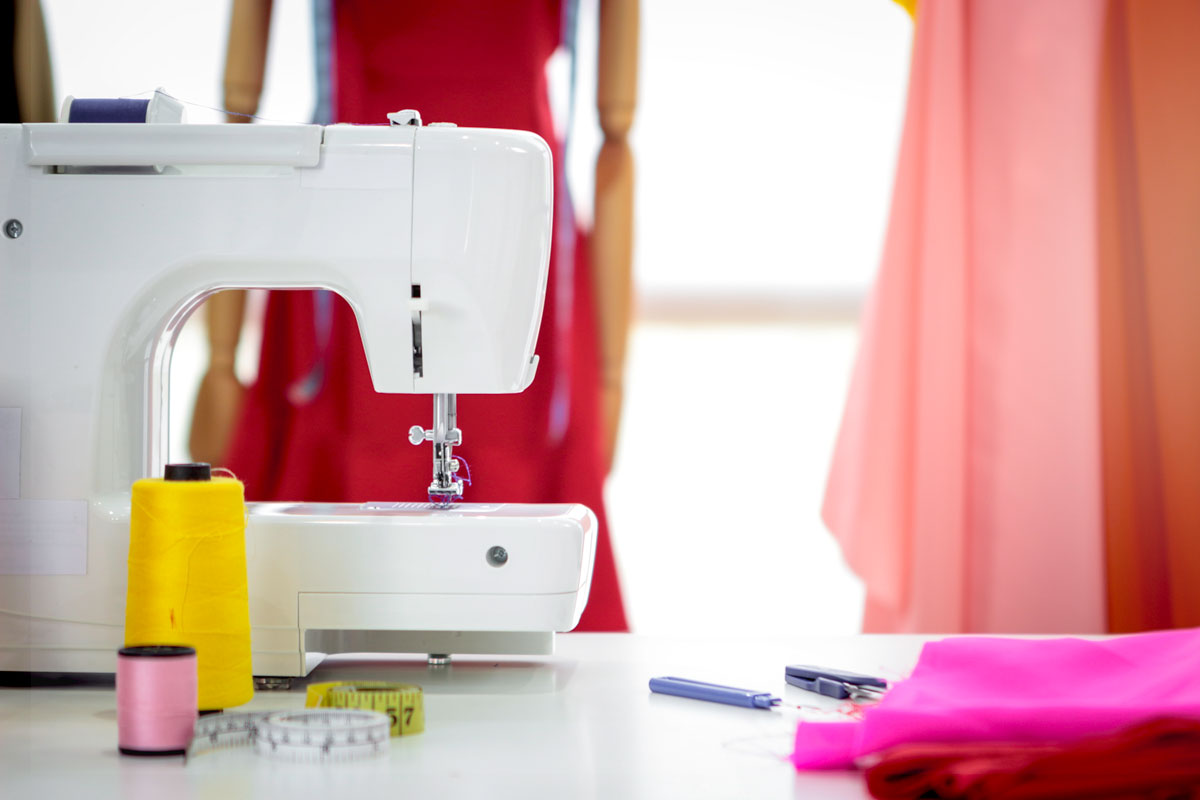
When it comes to how much a typical sewing machine costs, this can significantly vary. For a manual option, you can expect to pay around $60, while computerized models start at about $160.
In general, a high-quality sewing machine, manual or not, will set you back nearly $15o. Additionally, a professional, specialty, or industrial sewing appliance can cost anywhere from $1,000 to $5,000.
As we mentioned, this market varies depending on how technically advanced a given appliance is. That can greatly impact a sewing machine's price, ability, and overall quality.
Again, not everyone needs to have a thousand-plus dollar machine. If you want to get into sewing as a hobby, you don't need to throw down $1,000-$5,000 before you even know what you need in your appliance.
So, for the most part, this purchase shouldn't need to be more than $150.
How Long Do Sewing Machines Last?

A sewing machine typically lasts between five and 25 years on average. Of course, this is a dramatic timeframe, so everyone will be different.
For example, a beginner's sewing machine you spent less than $100 on will not generally last more than a few years. However, if you take great care of your system, then there's a possibility to see it work for years to come.
That said, someone who spent over $1,000 on their machine can usually expect it to last closer to that 25-year mark, so you get what you pay for.
Again, this will be unique for everybody, so we recommend finding a machine with a good warranty, regardless of how much it costs.
To Wrap It Up
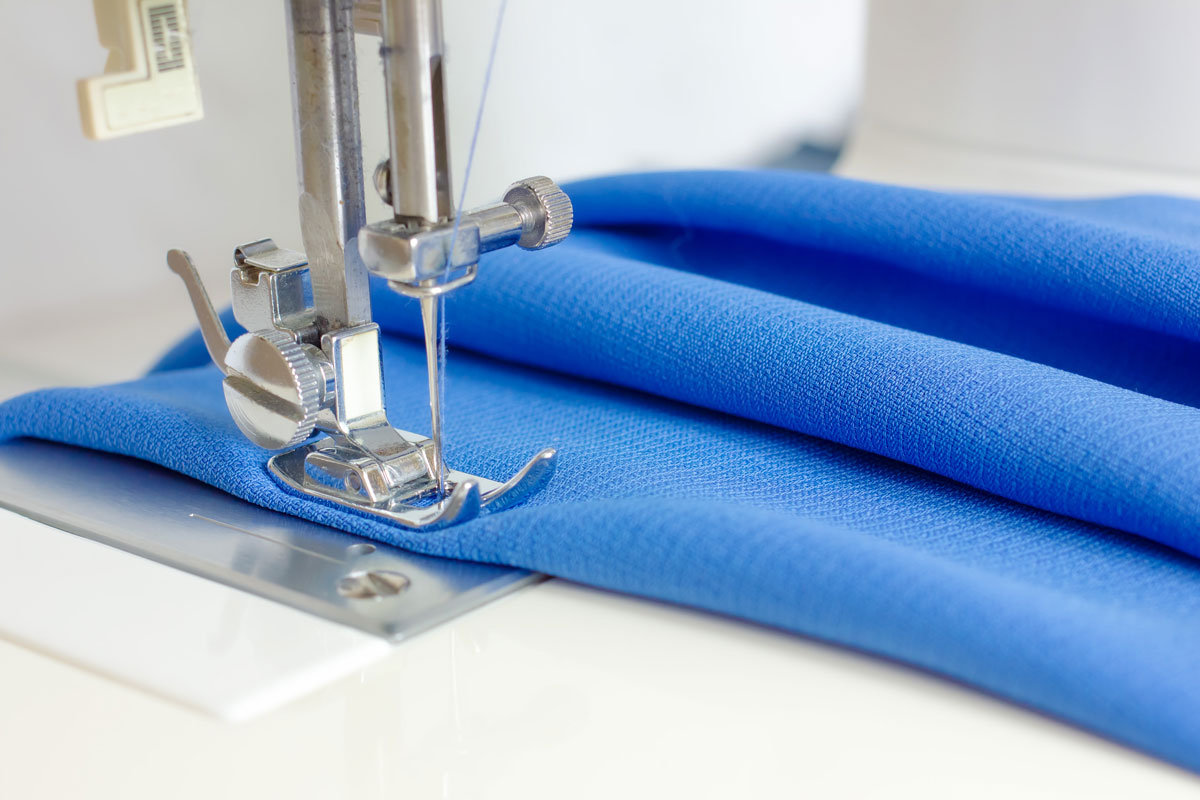
Whether you are a sewing expert or just beginning, you have to know how your machine works. We found that unthreading a sewing machine is easier than you'd think.
To do this, it's essential to be careful and pull the thread in the same direction it would if you were sewing. Additionally, you must ensure you have the correct bobbin and cover in your appliance.
Regardless, try to find a sewing machine with a great warranty, and don't forget to read the reviews before buying!
Made it to the end? Check out these helpful related posts below!
8 Best Sewing Machine Oils [Incl. Safe Alternatives To Sewing Machine Oil]





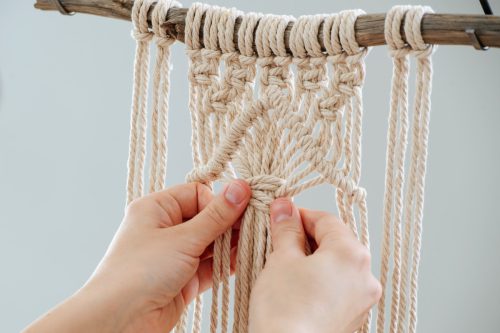
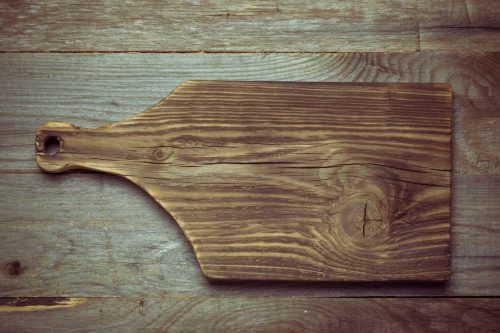
![Read more about the article Does Glue Go Bad? [By Type Of Glue]](https://craftsbliss.com/wp-content/uploads/2022/05/White-glue-container-on-a-blue-table-500x333.jpg)
![Read more about the article How To Crochet Dishcloths [20 Patterns]](https://craftsbliss.com/wp-content/uploads/2020/11/A-different-colored-crocheted-dishcloths-placed-on-a-table-500x333.jpg)
![Read more about the article How To Get A Smooth Paint Finish On Wood [A Complete Guide]](https://craftsbliss.com/wp-content/uploads/2021/09/Painting-timber-boards-outside-with-the-white-paint-500x333.jpg)